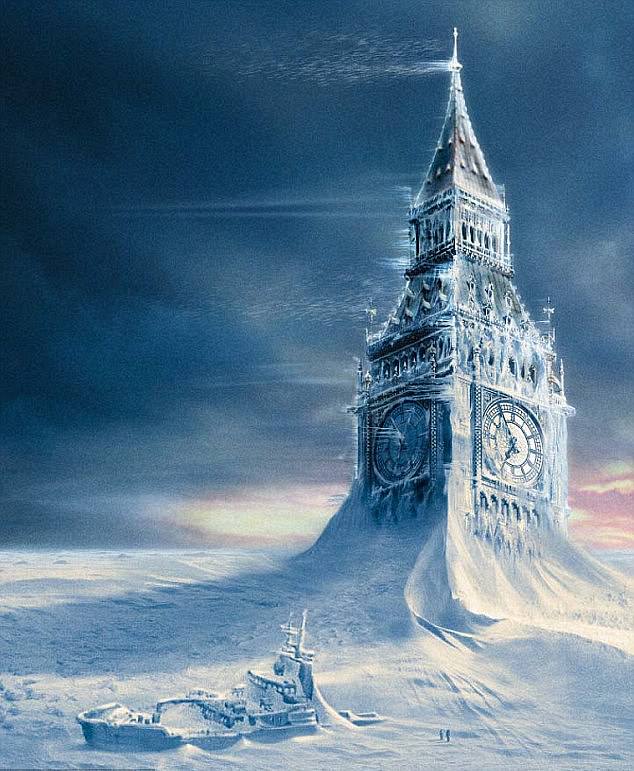The Day After Tomorrow? Climate disaster could happen any time in the next 6,000 years, scientists warn
- Researchers say it’s nearly impossible to predict the timing of climate tipping points
- They warn that a catastrophe could happen at any time in the next 6,000 years
It’s the movie that made us all afraid of disastrous and abrupt climate change.
But according to a study, The Day After Tomorrow is likely not the day we’ll experience apocalyptic weather conditions.
Researchers say it is virtually impossible to predict the timing of climate tipping points, and that catastrophe could occur at any time in the next 6,000 years.
A team from the Technical University of Munich and the Potsdam Institute for Climate Impact Research gave the Atlantic Meridional Overturning Circulation (AMOC) as an example.
This system circulates water in a long cycle from north to south and back into the Atlantic Ocean, carrying warm water from the tropics to the north.
It’s the movie that made us all fear catastrophic and abrupt climate change. But The Day After Tomorrow is probably not the time we’ll experience apocalyptic weather, according to a study
Climate models indicate that the AMOC will weaken over the 21st century due to increasing greenhouse gases and melting ice.
If the system were to collapse, it would become colder in the Northern Hemisphere, causing temperatures in Europe to drop dramatically.
In the Amazon, wet seasons would change to dry seasons and in coastal cities sea levels would rise even faster.
Previous predictions based on historical data suggest that a collapse could occur between 2025 and 2095.
However, the new research shows that the uncertainties are so great that these predictions are not reliable.
Using different datasets and analyses, the tipping times for the AMOC ranged from 2050 to 8065 — a 6,000-year window that isn’t particularly useful, the researchers said.
Writing in the journal Science Advances, they said the timing of other climate tipping points – such as the melting of the polar ice caps or the collapse of tropical rainforests – is also too uncertain.
That’s because too much remains unknown about the underlying physical mechanisms of climate change, there is a lack of direct observations of the climate system and there are incomplete historical records, they explained.
Lead author Maya Ben-Yami said: ‘Our research is both a wake-up call and a cautionary tale.

Climate models suggest that the AMOC will weaken in the 21st century due to increased greenhouse gases and melting ice. If the system were to collapse, the Northern Hemisphere would become colder, causing temperatures in Europe to drop dramatically.
‘There are things we still can’t predict, so we need to invest in better data and a deeper understanding of the systems involved.
“The stakes are too high to rely on uncertain predictions.”
While the research shows that we cannot reliably predict tipping events, the possibility of such events cannot be ruled out either, the team said.
They also stressed that statistical methods can still indicate very well which parts of the climate have become more unstable.
“We still need to do everything we can to reduce our impact on the climate, first and foremost by reducing greenhouse gas emissions,” said co-author Niklas Boers.
‘Even though we cannot predict the tipping times, the chance that important parts of the Earth system will tip increases with every tenth of a degree of warming.’
